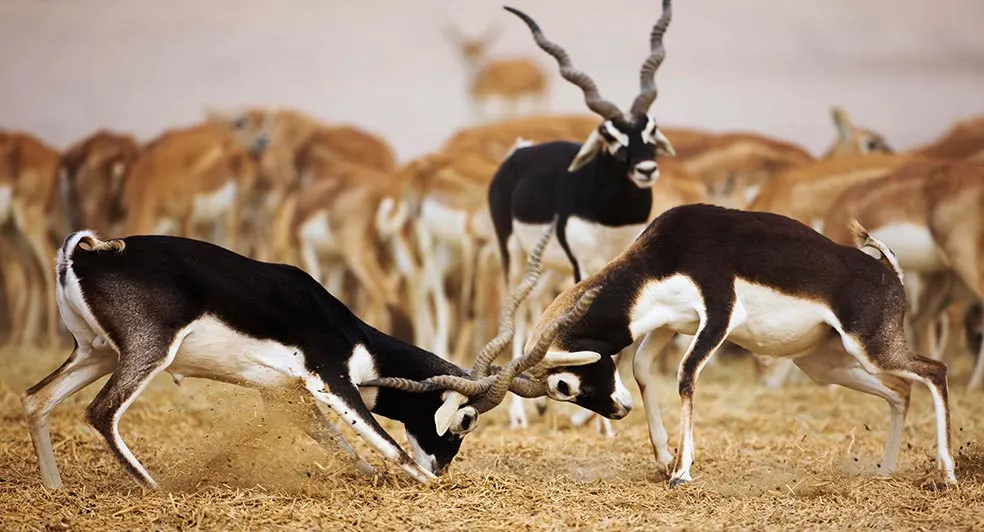Why these 5 destinations are essential for experiencing Abu Dhabi’s nature and wildlife?
Abu Dhabi, the capital of the United Arab Emirates (UAE), is not just a hub for luxury, culture, and architecture it is also home to diverse and captivating natural landscapes and wildlife experiences. From pristine beaches to lush mangroves, the Emirates offers a variety of unique ecosystems that attract nature lovers and outdoor enthusiasts.
1. Sir Bani Yas Island: Abu Dhabi’s Wildlife Paradise
Why It’s Essential: Among the many activities in Abu Dhabi, visiting Sir Bani Yas Island (a haven for wildlife enthusiasts) has to be at the top of your list. It is one of the largest natural islands in the UAE and is known for its Arabian Wildlife Park, which covers over half the island and is home to thousands of free-roaming animals, while including Anantara Sir Bani Yas Island Al Sahel Villa Resort, a resort for visitors to stay in while enjoying the wildlife of the island. Unique Wildlife Encounters: The Arabian Wildlife Park houses over 17,000 animals, including endangered species such as the Arabian oryx, cheetahs, and hyenas. Visitors can embark on guided wildlife drives that offer up-close encounters with these animals in their natural habitat.Birdwatching and Marine Life: The island is a birdwatcher’s paradise, with flamingos, ospreys, and herons among the many species spotted around the island’s lagoons. Sir Bani Yas Island is also surrounded by vibrant coral reefs, making it a great destination for snorkelling and diving to observe marine life.

Image via Anantara Sir Bani Yas Island Al Sahel Villa Resort
2. The Mangrove National Park: An Urban Oasis of Biodiversity
Why It’s Essential: Nestled in the heart of Abu Dhabi, the Mangrove National Park offers a unique glimpse into the city’s coastal ecosystem. This protected area is home to expansive mangrove forests that play a crucial role in protecting the UAE’s shoreline while providing a habitat for various wildlife.Kayaking Through Mangroves: One of the best ways to explore the park is by kayak. Paddling through the tranquil waterways allows visitors to see the mangrove trees up close and encounter the many species that call the park home, including crabs, herons, flamingos, and even sea turtles.Vital Ecosystem: The mangroves act as a carbon sink, helping to reduce carbon dioxide in the atmosphere and provide protection against coastal erosion. They are also a nursery for various marine species, contributing to the health of Abu Dhabi’s coastal environment.
3. Liwa Oasis: Gateway to the Rub’ al Khali Desert
Why It’s Essential: Liwa Oasis is a sprawling oasis on the edge of the vast Rub’ al Khali desert, also known as the Empty Quarter, the largest continuous sand desert in the world. This region provides a striking contrast to Abu Dhabi’s coastal and urban areas, offering visitors a chance to explore the desert’s stunning landscapes and wildlife.Dune Bashing and Desert Wildlife: Liwa is famous for its towering sand dunes, some of the highest in the world. Adventurers can engage in thrilling dune-bashing experiences while keeping an eye out for native desert wildlife such as Arabian sand gazelles and lizards.Oasis Farming and Palm Groves: The Liwa Oasis is dotted with farms where locals grow dates and other crops, showcasing the traditional agricultural methods that have sustained life in this harsh environment for centuries. The palm groves provide a lush, green contrast to the arid surroundings.
4. Jebel Hafit: Abu Dhabi’s Majestic Mountain and Natural Landmark
Why It’s Essential: Jebel Hafit is Abu Dhabi’s highest peak, standing at 1,249 meters, and offers breathtaking views of the surrounding desert and landscapes. It is located on the border between the UAE and Oman and provides a unique experience of Abu Dhabi’s geological and natural diversity.Fossil Exploration and Geological Wonders: Jebel Hafit is known for its rich fossil history, with marine fossils dating back millions of years embedded in its limestone formations. Visitors can explore these natural treasures while learning about the region’s prehistoric past.Mountain Wildlife: The mountain is also home to a variety of wildlife, including foxes, lizards, and several bird species such as eagles and falcons. Birdwatchers and nature lovers can explore the rugged terrain and discover wildlife thriving in the high altitudes.
5. Al Wathba Wetland Reserve: Birdwatcher’s Dream
Why It’s Essential: Al Wathba Wetland Reserve is one of Abu Dhabi’s most important protected areas, particularly for birdwatchers. This serene wetland is home to over 250 species of birds and is especially famous for its population of flamingos, which migrate to the reserve during the winter months.Flamingo Observation: One of the main attractions of Al Wathba is the large flamingo flock that calls the reserve home. During the winter, thousands of these pink-hued birds can be seen feeding and resting in the shallow waters of the wetland.Ecological Importance: The reserve is an example of the UAE’s efforts to protect its natural habitats and promote biodiversity. In addition to birds, Al Wathba is home to reptiles, small mammals, and various plant species that thrive in the wetland’s unique ecosystem.
